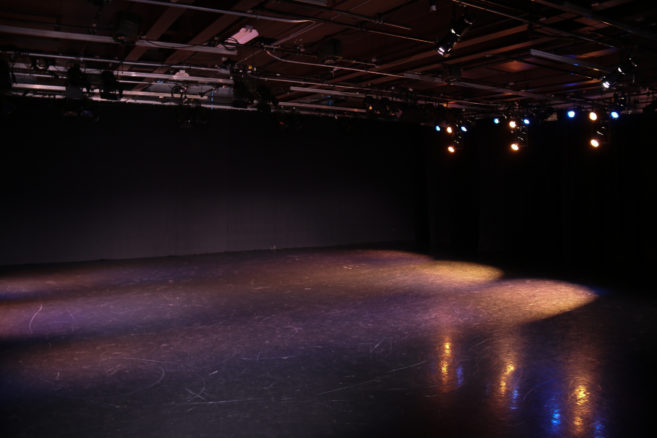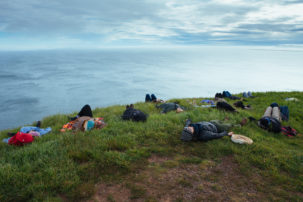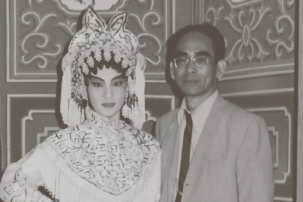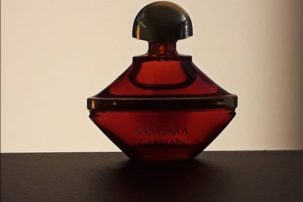In the mid-1940s, a group of mostly young Montreal artists gathered, united by their interest in European surrealism. In April 1946, their first official exhibition, featuring paintings by Marcel Barbeau, Paul-Émile Borduas, Roger Fauteux, Pierre Gauvreau, Fernand Leduc, Jean-Paul Mousseau and Jean Paul Riopelle, took place at 1257 Amherst Street in the heart of an east-end working-class neighbourhood. This was followed by a second exhibition in February 1947, in Gauvreau’s mother’s apartment at 75 Sherbrooke Street West. The critic Tancrède Marcil would later call them “Les automatistes,” a term pointing to their shared affinity for gestural abstraction and non-sequitur writing that, untamed by the stronghold of societal alienation of the time, seemed to give free rein to the unconscious.
The artists had also planned an exhibition to accompany the publication of their 1948 artists’ anthology Refus global, but the show was soon abandoned. Printed in an edition of 400 copies on a Gestetner machine in the Gauvreau family apartment, the anthology was not supposed to outlive its brief circulation. The manifesto section of this collective effort, authored by Borduas, bore the signatures of an additional 15 artists from the Automatist group. Peripheral components of the anthology (by Leduc, Riopelle, psychiatrist Bruno Cormier, poet Claude Gauvreau, photographer Maurice Perron and choreographer Françoise Sullivan), fell into oblivion until new scholarship appeared in the 1990s, notably Ray Ellenwood’s Egregore: A History of the Montréal Automatist Movement (1992) and Patricia Smart’s Les femmes du Refus global (1998).
Within only a few years the Automatist group had been firmly canonized, but by the 1950s, interest in abstract expressionism and surrealism in Montreal had just as quickly given way to the hard-edged geometries of the Plasticiens. Yet the Refus global manifesto, with its rejection of the then-church-bound, status quo mindset of Quebec, doggedly lived on. During the early 1970s, the text was heralded as a rupturing gesture, precipitating Quebec’s late modernity and prefiguring the socialist agenda of the sovereignty movement (even though Borduas stated his aversion to nationalism explicitly, and his distaste for the provincialism of then premier Maurice Duplessis implicitly). Each decade, the manifesto is celebrated in some form. I have witnessed many of these revivals, including in 2018, the 70th anniversary of the publication of Borduas’s text.
These artists put the idea of emancipation in the movement to the test, both on a formal and political register…they transposed the Automatist legacy onto the complexity of a contemporary experience.
Peering through the glass partition that opened on to artist Klaus Scherübel’s recent site-specific intervention at VOX centre de l’image contemporaine, I immediately recognized an iconic photograph by Maurice Perron, the Automatist’s official photographer. Using this image as a template, Scherübel transformed a section of the gallery’s architecture into a corner of Mrs. Gauvreau’s home as it appeared during the second Automatist exhibition in 1947, ironically incorporating the private, almost clandestine space into the kunsthalle-like institution as if it were a “period room.” Like the photograph, which originally appeared in Refus global, the set was rendered in greyscale, with details blown up to life size, creating surrogates for the paintings while also recalling the difficulties, during that period, of reproducing artworks in print. Quoting another photograph by Perron, this time a group portrait of the Automatists, Scherübel similarly reconstructed part of the apartment of the actress Muriel Guilbault, which also served as a provisional exhibition space for the works of Mousseau and Riopelle in 1947.
Witnessing the documentation of those exhibitions in the absence of the larger historical context, one could easily repeat a misreading long ago corrected by the scholarship of art historian Rose-Marie Arbour, Patricia Smart and others. Although the Automatist’s women protagonists, such as Marcelle Ferron, Muriel Guilbault, Thérèse Leduc, Louise Renaud, Madeleine Arbour, Françoise Riopelle and Françoise Sullivan appear in Perron’s installation shots, the paintings shown in these photographs remain exclusively those of the group’s male artists. In the 1940s, the women signatories of Refus global had to choose other disciplines—dance, poetry or theatre—to gain comparable visibility. Ferron, who at that time focused on painting, is the exception, but it wasn’t until 1949 that she was invited to take part in group shows. It is lesser known that while in New York, Louise Renaud and Françoise Sullivan acted as networkers for their Montreal peers, as a gesture of friendship. In 1945, for example, Sullivan put together an informal presentation under the title “The Borduas Group” at the Franziska Boas dance school, where she studied. Much later, in the early 1970s, Louise’s sister, Jeanne Renaud, opened Galerie III in old Montreal with her partner Ed Kostiner, where she showcased the work of some former members of the Automatists as it had evolved in the meantime. It was there, in 1972, that Fernand Leduc exhibited his series “microchromies,” which explored minute variations in the colour spectrum. A year later, Sullivan made a then-radical gesture of displaying her conceptual project Travaux d’Italie in a half-closed space, only viewable through small holes in newspapers pasted on the windows at the gallery entrance.
In 2018, a long-overdue retrospective of Sullivan’s work was held at the Musée d’art contemporain de Montréal. Using an open installation design, curator Mark Lanctôt emphasized crossovers in the artist’s practice spanning many decades. Sullivan’s experimental approach extended from choreography in the 1940s, minimalist sculpture in the ’60s and conceptualism in the ’70s, returning to painting in the ’80s, a medium to which she has since remained faithful. Alongside the exhibition, commissioned works by Dana Michel, Maryse Larivière, Dorian Nuskind-Oder and Simon Grenier-Poirier, among others, explored these interlaced practices while reappraising the contemporary relevance of Refus global. In contrast with Scherübel’s reification of history through partial restagings of the Automatists’ exhibitions, these artists put the idea of emancipation in the movement to the test, both on a formal and political register. Rather than merely reiterate the Automatists as an “answer” to a particular historical context, they transposed the Automatist legacy onto the complexity of a contemporary experience.
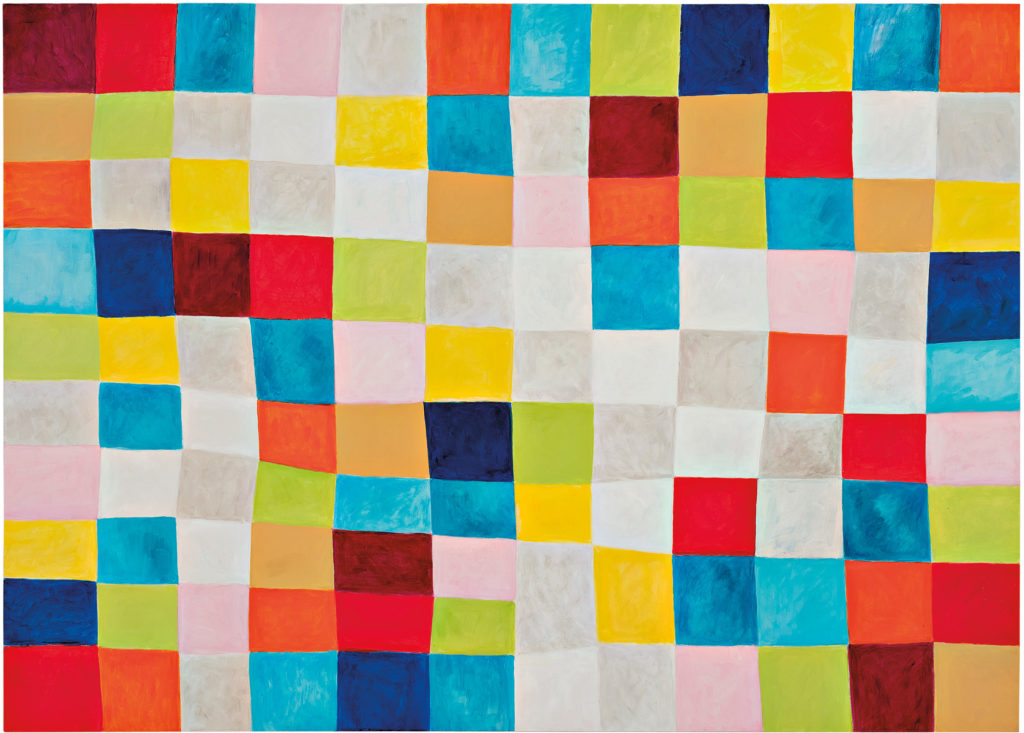 Françoise Sullivan, Les Damiers no. 5, 2018. Acrylic on canvas, 1 52 x 2.13 m. Collection of the artist. Photo: Richard-Max Tremblay.
Françoise Sullivan, Les Damiers no. 5, 2018. Acrylic on canvas, 1 52 x 2.13 m. Collection of the artist. Photo: Richard-Max Tremblay.
A few months before the Sullivan retrospective, curators Doriane Biot, Camille Richard and Véronique Hudon provided another counterpoint to the often-undisputed reverence for these markers of Quebec history. In the exhibition “Refus contraire” at Galerie de l’UQAM, they asked mostly emerging artists to partially endorse or completely reject the statements in Refus global. In her response Nous serons universel.le.s (2018), Kamissa Ma Koïta, like Scherübel, referred to the iconic series of photographs by Perron. But her reenactment attempted to reveal a conspicuous absence: that of racialized people in and around the collective. Ma Koïta invited her peers to “occupy” an imaginary place within the set-up of Perron’s group portrait. During performative sessions, 10 Black artists from Montreal adopted the roles of the members of the Automatists, knowingly ignoring the white audience in close proximity as a momentary reversal of the violence of everyday exclusion. Although direct references to the Automatist painters were limited in “Refus contraire,” Mathieu Grenier presented a fragment of his project Au-delà des signes (2013) specifically addressing this legacy. As a former technician at the Musée d’art de Joliette, Grenier was able to recover discarded portions of gypsum panelling on which paintings by Barbeau, Borduas, Leduc and Riopelle once hung. After the exhibition, the curators of “Refus contraire” kept one of Grenier’s series: the ghostly silhouette of a Borduas piece, its surface here metaphorically inviting some other refusals that the performative pieces in the show enacted.
Francine Savard also summoned Borduas’s afterlives in her 2018 exhibition “Programme d’oeuvres en devenir de P.-É.B. (1959-1960)” at Galerie René Blouin. The project focused on a little-known episode during Borduas’s “Parisian exile,” when he made ink sketches—perhaps studies for future large canvases—on Gitanes cigarette packs. Unwell and living in poverty at the time, he passed away in 1960, leaving us to imagine how such a series might have been realized. This speculative aspect of this later work has been eclipsed by the authoritative exegesis in Borduas’s catalogue raisonné, which describes the sketches as finished pieces. Savard, however, decided to transgress this rigidity by translating the compositions to canvas, giving them a new plasticity through flatness, closer to painted ideograms than to the heavy impasto used by Borduas in his black-and-white abstractions a few years earlier. The resulting forms, Savard has said, exist somewhere between recuperation and valorization.
This scenario of Borduas’s “late style,” extended posthumously by Savard, brings us back to Françoise Sullivan, and her most recent painting series, Les damiers (2018–). Sullivan started with a row of coloured squares at the top of a canvas, working downward to explore all of the permutations of these chromatic units. Sullivan, at age 96, doesn’t use masking tape or other templates, and so her grids register microscopic movements; the imperfect gestures of her body become curves that converge like a spider’s web in the middle of the canvas. In these works, expressiveness is no longer competing with concept. One could say that Sullivan sustains the paradox of automatism itself: following habit, while not giving way to desire.

